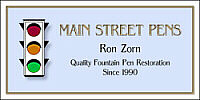I have looked everywhere for an authoritative answer to this question. Perhaps one of the professionals here can lay this one to rest now.
It is pretty generally accepted that Shaeffer unmarked single tone nibs are, in fact, solid 14-k gold.
But is this also true of the 2-tone nibs, either LIfetime or otherwise? Or are they gold-plated? Or is the white metal portion really solid 14-k gold that was then overplated with some other metal, like rhodium or such?
It is hard to believe that Shaeffer would put a lifetime guarantee on a nib that was only gold plated...On the other hand, would it be so much more trouble to just stamp them 14-k???
As always, with sincere appreciation for your responses.
Stuart07















